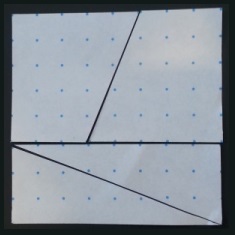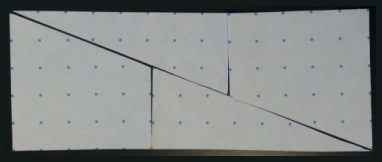
Draw an eight by eight square on dotty paper. You can print some here.
Cut it up to make the four pieces shown in the diagram:

Now rearrange the pieces to make the shape below:

It seems that the same pieces can make two shapes with different areas!
Can you explain where the extra area comes from?
Here are some questions you might like to consider:
Can other squares be split up and rearranged to make rectangles with a different area?
Are there other square/rectangle pairs where the areas differ by 1 square unit?
Is there a pattern in the sizes of squares that can be arranged in this way?
